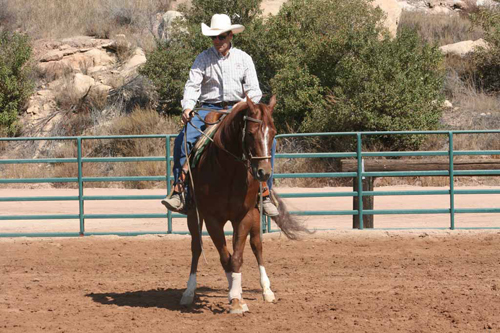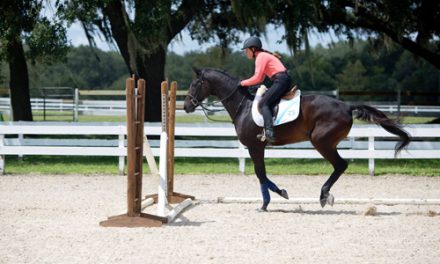
Leg Yielding
One horseman phrased it like this, “Body control isn’t a big thing. Body control is everything!” In light of this truism, I want to talk about leg yielding and side-passing and how you can refine it for more precise body control.
In horses’ early trainings, I will teach them to move off of my leg and step over laterally. As my horse progresses, I’ll expect the front and hind end to step over simultaneously. This movement is awkward at first and it takes practice for a horse to step over consistently. This simple leg yield will probably be performed with my horse in a slight counter-bend. In other words, when I push my horse laterally to the right, he will be slightly bent to the left. I will probably be able to see his left eye, but not his right. This is what I consider a “leg yield.” If you can do this simple movement you’ll be able to open a gate or pick your soda can up off the fence. For many riders, that’s enough. However, if you are interested in performance horsemanship and ultimate body control, you should be starting to take this maneuver to the next level. This is what I call a true side-pass.
For me, side-passing denotes more straightness in my horse’s body. I want to take the counter-bend out of my horse as he steps over laterally. You can tell a lot about your horse’s body alignment by which eye you can see while mounted. If my horse is side-passing over correctly to the right, I don’t want to be able to see his left eye at all. If I can see his right eye, great! If I can’t see either eye, that’s fine as well. I’m striving for straightness. If this is a new concept for you, you’ll find that it’s much more difficult than the simple counter-bending leg yield.

Side Passing
Here are some practical tips to help you perform this maneuver correctly:
1. When stepping to the right, hold your right rein directly against your
horse’s neck. Remember, you are trying to keep your horse’s right eye
in sight. By keeping this right rein against his neck it will prevent a
counter-bend and help keep his shoulders up and straight.
2. When side-passing to the right, lift your right rein up in an imaginary
line towards your left shoulder. This will feel awkward for those who
have only practiced leg yielding in a counter-bent position.
3. Ultimately you want to do less and less with your outside rein. At first
you’ll need to counter balance with your left rein while side-passing
to the right. However, your emphasis should be placed on the rein
in the direction you are going.
4. Don’t be afraid of forward drift while practicing side-passing. If your
horse has his weight shifted back, it will be difficult to step his outside
foot over his leading foot. Allowing some forward movement will
help your horse to step more consistently.
Some trainers may use different terminology for these maneuvers. That’s alright. You can label these movements any way that makes sense to you. The main idea is that you understand the difference between your horse’s body positions while performing these movements. Performance Horsemanship demands refinement in every area of body control. Developing proper body alignment in the side-pass will assist you with better canter departures, balanced circles, lead changes, and much more. Work on executing the side-pass correctly and it will help take your horsemanship skills to the next level.
You can view footage that compliments this article at: YouTube – Richard Winters Horsemanship.





